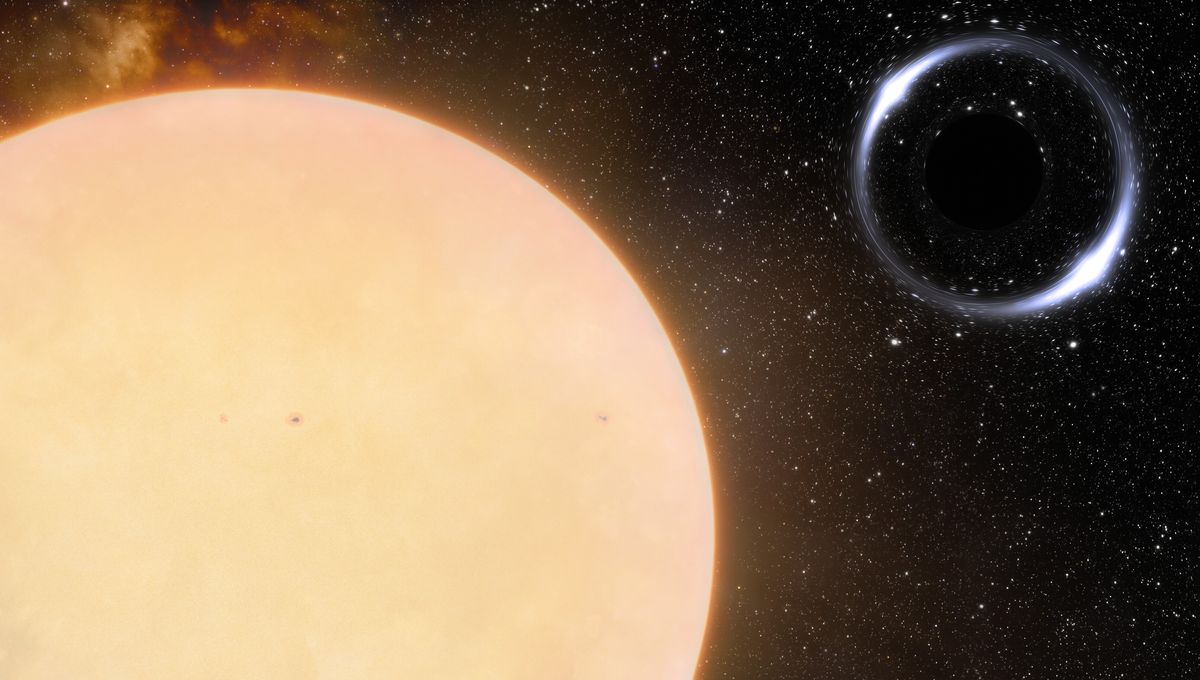
An international group of astronomers has determined the closest black hole to Earth. And, it is orbited by a star similar to our Sun, the first time such a binary system has been discovered in our galaxy. The object, known as Gaia BH1, is located 1,600 light-years away, and it has a mass about 10 times that of our Sun.
Black holes such as this are known as stellar-mass black holes. Their masses are at most 100 times that of our Sun and they were created in catastrophic supernova explosions. About 100 million of these objects should exist in the Milky Way, but only a few have been discovered. Among them, almost all are actively feeding, stealing material from a companion star, and releasing a large amount of X-rays.
But Gaia BH1 is different. It is not stealing anything from its stellar companion, so it is considered dormant. The object was originally spotted by the European Space Agency’s Gaia spacecraft. Gaia captured peculiar irregularities in the companion star. Follow-up observations with the International Gemini Observatory expanded on the readings of the star’s motions and confirmed that it is likely to orbit a black hole.
“Take the Solar System, put a black hole where the Sun is, and the Sun where the Earth is, and you get this system,” lead author Kareem El-Badry, an astrophysicist at the Center for Astrophysics, Harvard & Smithsonian, and the Max Planck Institute for Astronomy, said in a statement. “While there have been many claimed detections of systems like this, almost all these discoveries have subsequently been refuted. This is the first unambiguous detection of a Sun-like star in a wide orbit around a stellar-mass black hole in our galaxy.”
The team considers this detection unambiguous after years of hunting for dormant black holes. And while the data appears solid, it is not clear exactly how this system came to be. The binary system ought to have been made by a massive star about 20 times the size of our Sun, orbited by the Sun-like companion we can still observe.
That massive star would have evolved into a super red giant star in a matter of millions of years. The outer layer of that star would have engulfed its companion, before the fateful collapse and subsequent explosion of the supernova. How the companion survived all that is a mystery, suggesting that we may not have a complete understanding of how black hole binaries form and evolve.
“It is interesting that this system is not easily accommodated by standard binary evolution models,” concluded El-Badry. “It poses many questions about how this binary system was formed, as well as how many of these dormant black holes there are out there.”
The work was published in Monthly Notices of the Royal Astronomical Society.
Source Link: Record-Breaking Closest Black Hole To Earth Discovered